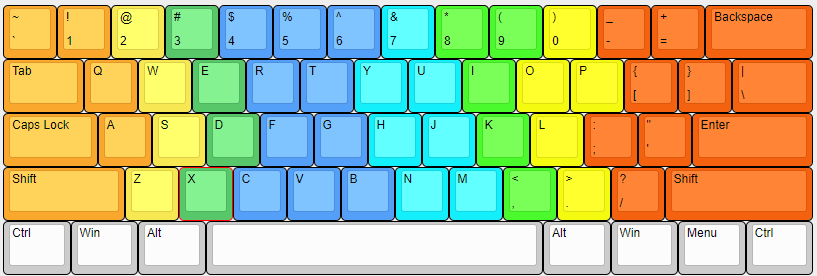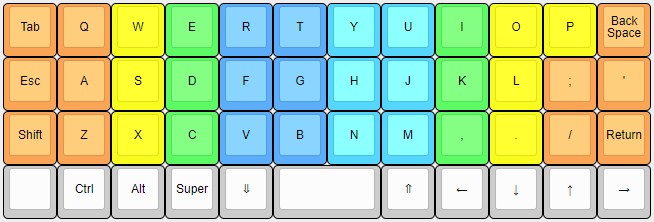We live in a time where avenues for personal exploration and expression have never been greater: in a similar vein to when I was investigating smaller sizing options for pianos, I recently started looking at another kind of keyboard. Computer keyboards are still the default entry device for the digital world we live in, and chances are, you used one today. The mechanical keyboard space has many hobbyist fans and benefits from an innovative, tech-native community; given my experience with the Steinbuhler piano keyboard, I leaned in the direction of smaller form factors and better efficiency. And keyboards have been shrinking over time: the only keyboard I used when working was on the company-issued laptop, while the last full-sized keyboard I can remember seeing on a desktop was an entire decade ago.
Considering how the Shift modifier key allows each alphanumeric key to act bi-functionally, the many single-purpose keys on a 104 key-regulation keyboard can seem somewhat extravagant. All that real estate means more distance for hands and fingers to move – anathema if you’re a touch typist – and requires the mouse be shifted farther right than is optimal for arm and shoulder. Smaller keyboards address this issue, and are designated by a percentage that compares their footprint against a full-sized keyboard; they overcome the problem of fewer keys by using modifiers to make more keys multi-functional. They include:
- 75% – which removes the number pad and navigation clusters, while squeezing arrow keys into the main alphanumeric block
- 60% – removes the function key row (the 65% retains the arrow keys from the 75%)
- 40% – ambitiously removes the number row as well
Interestingly, the staggered key layout of modern keyboards is a historical artifact, and not the product of ergonomic insight – typewriters required this staggered arrangement for all the keys and their connecting levers to fit in side-by-side fashion. Muscle memory built up through years of practice allows most of us to type quickly, but it’s plausible a grid or matrix layout could be more ergonomic and efficient. Ortholinear is the name given to such layouts, and some also stagger the columns to match variation in finger length.


All of which brings me to my favorite keyboard of recent times, the ridiculously tiny, yet somehow fully functional 40% ortholinear Planck EZ. $195 seems high for something we usually get for free with a computer, but both 40% and ortholinear are considered niche even in this space, and it does offer premium features like PBT shine-through keycaps (sadly, the textured white surfaces have started to darken already), and being hot-swappable, meaning the key switches that are responsible for its typing feel can be personalized and changed out simply, without desoldering.
The layout is surprisingly intuitive; it took only a few days to return to and even exceed my regular typing speed (90-100 wpm, depending on the test and typing website). It seems ortholinear is a bit of a game changer for me, although it can be tricky if you have to occasionally spend time back on a regular keyboard. The diminutive size is also a boon for desktop real estate – other so-called smaller keyboards dwarf it by comparison – and the minimalist aesthetic doesn’t hurt.

Customization is the Planck’s other major feature, and the key to getting the most out of it – three additional layers besides the base layer are available out of the box. The creators of the EZ have smartly designed an online GUI around the open source firmware tools created by a passionate enthusiast community, simplifying the building and flashing of custom keymaps, which I definitely appreciated. For the keymap below, which I’m writing this post with, I tried to:
- focus on single (mainly right-) handed solutions to use cases – navigation, number entry, mouse use
- facilitate staying in home key-position as often as possible, to accommodate touch typing
- use qmk’s hold to activate modifiers to reuse more keys on the base layer (for example, I save my last finger the stretch to hit Left Shift, and hold down Z instead, hopefully reducing fatigue in the long run)
- color key lights by function group

Of course, there are also split keyboards which break the keyboard into independent halves and promise yet more ergonomic benefits (split variants of the Planck also exist, of course!), but I’m not sure I haven’t reached the point of diminishing returns already with the Planck. Ask me in a year? ^_^
